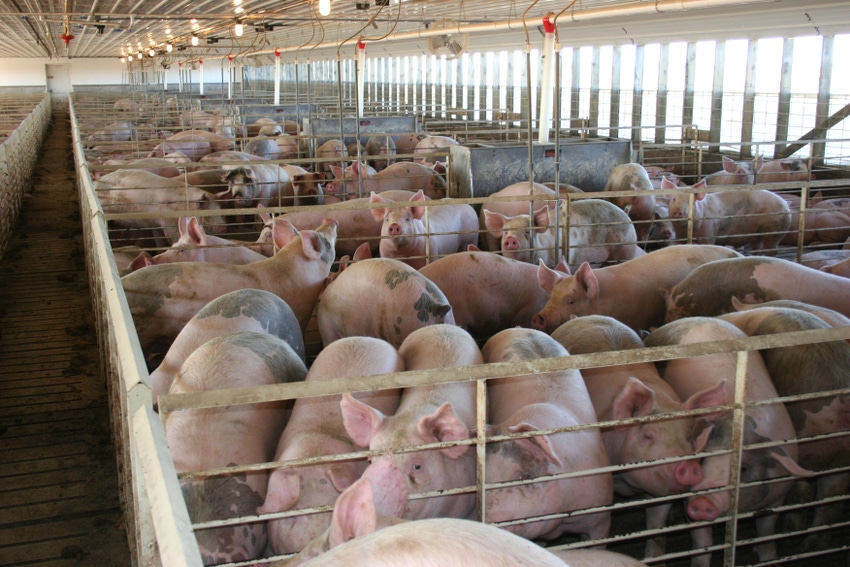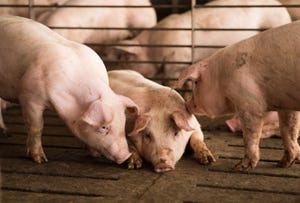How long will hog market strength last?
Current price levels will last well beyond the summer months.
April 5, 2021

In January, I suggested that hog futures were on the launch pad and ready to rocket upward. In early February, I had to admit that the rocket had not yet lifted off. But by early March, it was quite obvious that the rocket had left the launch pad. The only question was how much fuel was in the boosters? Well, we now know that the fuel boosters were full.
The Wall Street Journal reported April 1 that lean hog futures outperformed all other markets, including global stock indexes, bond ETF’s, currencies, and all other commodities. Lean hogs were number one, returning 43.79% during the first quarter. A nice development that was a long time coming in the wake of the disastrous 2020 as well as the losses incurred for several years prior to 2020. Now, the question is: How long will hogs remain in orbit?
As I focus my telescope and watch the hog market, here’s what I see. I see a market that has surpassed the highs from 2019, moving through these levels like a hot knife through butter. The 2019 high in the April hog contract was $82.00/cwt. On Friday, April 2021 hog contracts settled at $101.70/cwt. The 2019 high in the June hogs was $100.00/cwt. On Friday, June 2021 contracts settled at $106.80/cwt.
The April hog contract expires in less than two weeks. Focusing on the summer hogs, the highs established in the PEDV year of 2014 could very well be tested this year. These levels are $133.00-$134.00 in all three summer contracts. October hogs in 2014 peaked above $116.00 on July 3, with the December peaking at $105.80 in early July of that year. I’ve talked to some analysts that believe summer hog futures will trade to $140.00.
At this moment, in my opinion, the fall and winter 2022 hog contracts are the most undervalued. As we exit bullish positions in the April hog contracts, unwinding both long futures and long calls, we’re actively buying December calls and establishing bull call spreads. These are non-marginable positions. We are unhedged. My plan for hedging is to become very active in the summer hogs as they approach $120.00. At this point, we’ll be buying puts, possibly buying puts and selling calls, and looking, for the first time, at possibly selling some carcass contracts for our hedge clients.
I consider the fundamental landscape bullish to very bullish. It’s almost a perfect storm. Because of what happened last spring, when large numbers of hogs were backed up as COVID hit, butcher hog supplies this spring are way below expectations. Large numbers of sows that were farrowed, or supposed to be farrowed, were either aborted or the baby pigs were euthanized. Producers were desperately trying to survive the crisis. These numbers, or lost numbers, were never picked up, never measured and quantified by the USDA. They did not even try. The decision was made to simply let the market figure it out, which is happening today. Most analysts were projecting the kept-for-market hog category would come in at 100% of last year. Instead, numbers are down from 5% to as much as 8%.
So, the situation from 10 and 11 months ago is impacting the current supply of butchers. The current situation will impact the supply of butchers early next year. PRRS and PEDV have caused horrible problems since last fall. At the same time, feed prices began to escalate. Decisions were made to exit the business. Large numbers of sows were culled.
Today, due to the shortage of pork and the continued shortage of labor at packing plants, the available supply of trimmings is extremely tight. Record high trim prices are causing sow plants to bid extremely high prices for heavy sows in an effort to obtain product and meet demand.
Sow liquidation continues despite the return of profitability. Producers can collect extremely high prices for their sow herd and still have hogs to market in a very strong pricing timeframe. This is why I believe that October, December and February hogs are extremely undervalued.
The final bullish development about to unfold is the fact that none of the pigs are being fed the feed additive Paylean. As summer approaches, hog weights will drop substantially, vastly enhancing the pork supply shortage.
The demand side of the ledger is, perhaps, even more enticing than the supply side. The employment report issued April 2 indicated that 916,000 jobs were created in March, far higher than expected. Leisure and hospitality showed the strongest gains, tacking on 280,000 new jobs. Bars and restaurants created 176,000 new jobs. This is a leading indicator of what I refer to as the pent-up demand about to be unleashed.
This flurry will mean very large meat consumption, of course including pork. Normal seasonal demand is underway and the re-stocking of food service has begun in earnest. Remember, we’ve never shut down the foodservice industry like what’s occurred over the last 12 months. This surge in demand is unmeasurable.
Finally, last but not least is the tremendous pork export demand fueled by China. It’s becoming more and more clear that China has just suffered a severe second wave of African Swine Fever, decimating their sow herd. Anticipate strong demand and growth in pork exports in 2021.
Outstanding pork export sales, at 383,284 MT, are the highest ever for this time of year. Outstanding sales to Mexico represent 31% of those outstanding and sales to China/Hong Kong represent 26% of those outstanding. In my opinion, the USDA will be forced to revise upward their export projection for this year in the upcoming meat supply/demand table scheduled to be released Friday, April 9. Increasing export trade will be occurring in the face of lower butcher hog numbers and lower production. Higher to sharply higher prices will be the result.
In conclusion, the hogs will be in orbit for a long-term ride. This ride will last well beyond the summer months. I anticipate strong to very strong hog prices to continue for the remainder of 2021 and likely for most of 2022. The industry was in an aggressive expansion mode for years, even in the face of zero profitability, as producers were convinced to capture market share as slaughter capacity expanded. The industry was headed for a dark and deep bottom until the onset of African Swine Fever in China in late 2018 saved the day. Now, with profitability clearly on the horizon, ironically, the industry is in a contraction mode that may continue for most of the summer.
There’s only one major hazard to be aware of, and that’s the remote but very real possibility of an ASF scare in this country.
If you would like help in navigating these markets, including the grain market, please contact me.
Source: Dennis Smith, who is solely responsible for the information provided, and wholly owns the information. Informa Business Media and all its subsidiaries are not responsible for any of the content contained in this information asset. The opinions of this writer are not necessarily those of Farm Progress/Informa.
About the Author(s)
You May Also Like





